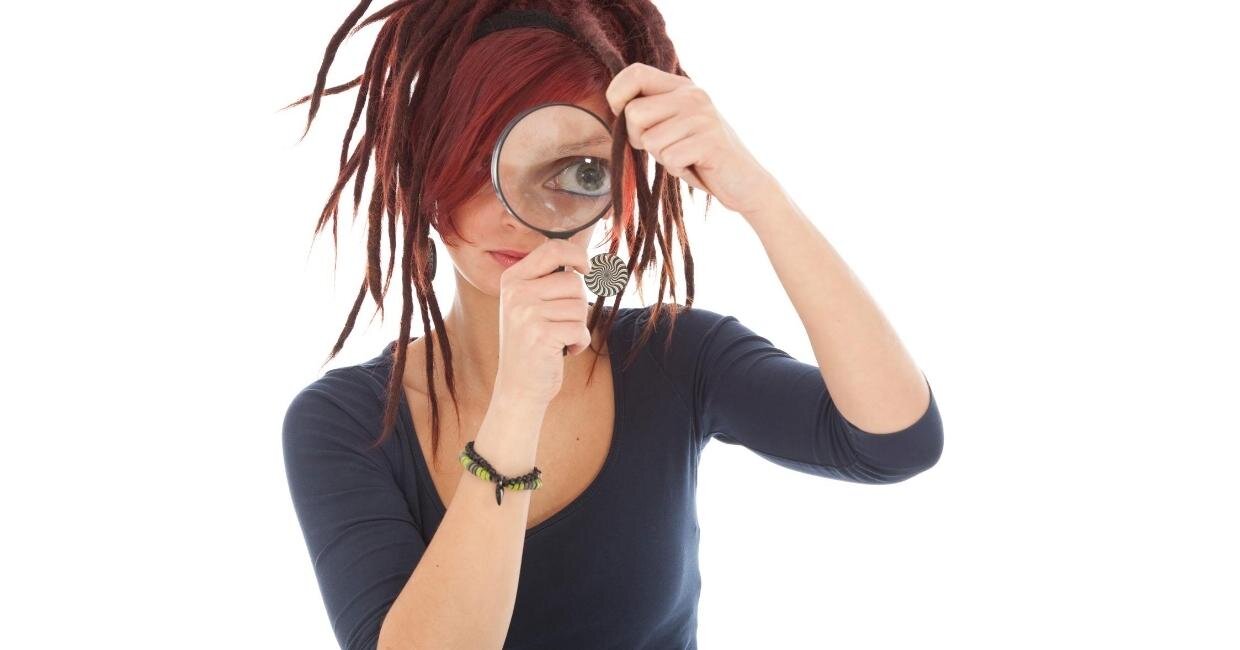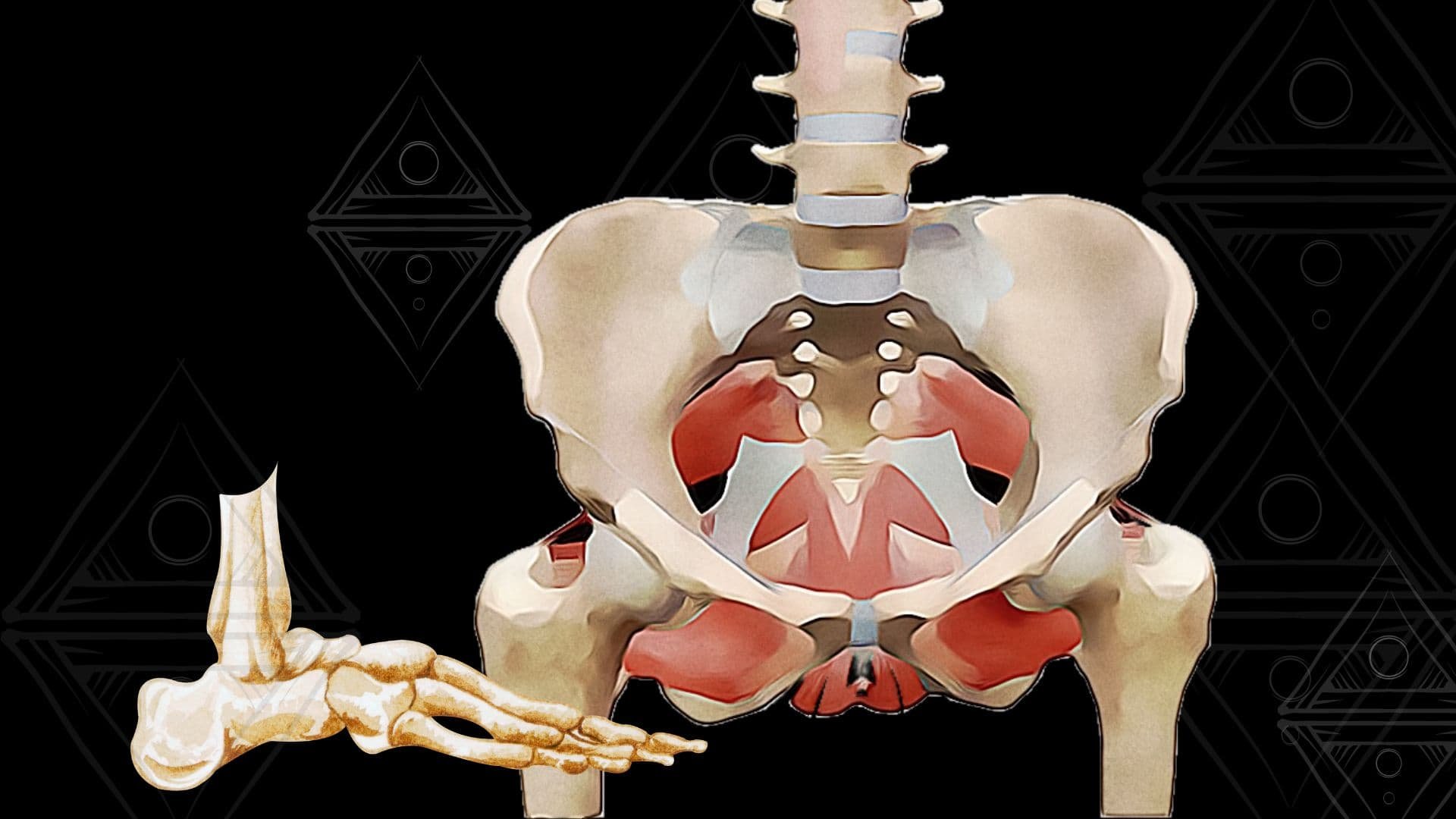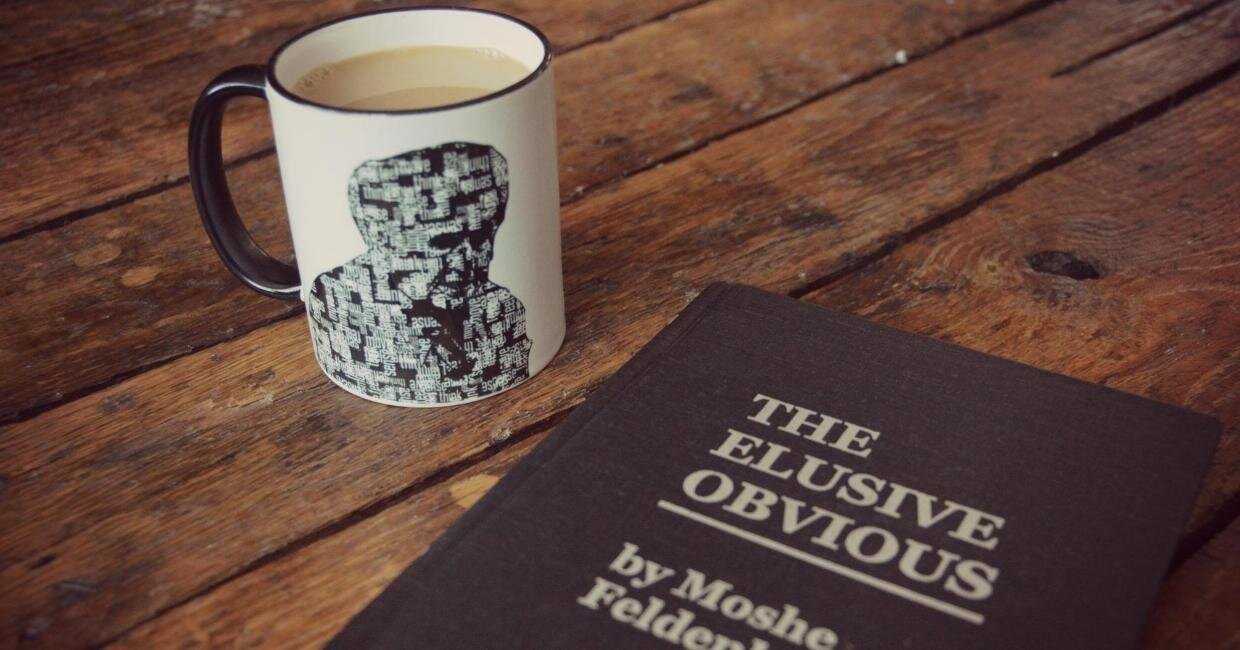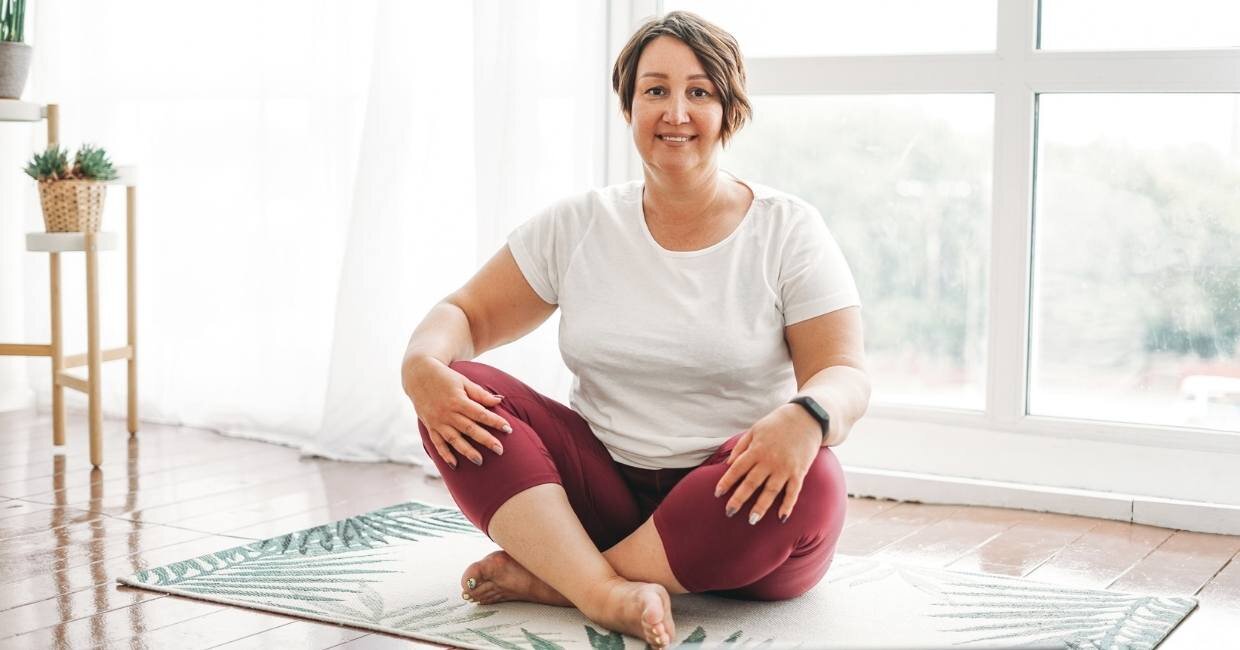Feldenkrais Is So Much More Than Movement
How we move either contributes to our resilience, physically and emotionally, or it breaks us down.
The book, The Elusive Obvious, was once only available in hardback format, bringing me a special kind of sensorial gratification. As I hold the book in my hands, I can feel the strength of the binding and the subtle texture beneath my fingertips. The simplicity of the solid black and white cover delights my minimalist spirit as the title begs me to delve into a koan-istic approach to moving and learning.
I still have my hardback copy that I purchased years ago. Each time I flip through the dense and fibrous pages, I digest each word of somatic wonder. My mind starts to bend towards a deeper realization that this work, The Feldenkrais Method®, is so much more than movement. What we discover about ourselves can change everything!
In this blog post, I’ll share some of my favorite quotes from The Elusive Obvious and muse a bit about why they resonate with me and how I see their impact on life. You find that they resonate with you, too.
Let’s Begin With Learning
Moshe speaks specifically to learning in the second chapter of The Elusive Obvious. I believe that learning is one of the greatest gifts of life. But for many, the word learning has a bad rap. They associate it with the boring and maybe even downright degrading aspects of formal education. I once even advised not to use the word learning in my marketing materials because it would turn people off.
In my opinion, learning has become a dirty word because of the grave misfortune of living in a culture that prioritizes specific types of intelligence over others — specifically linguistic (verbal) and logical (mathematical). There is often less value placed on other types of intelligence.
Types Of Intelligence:
Kinesthetic (body): coordinating your mind with your body
Spatial: spatial judgmentv& visualizing the world in 3D
Interpersonal: understanding and relating to other people
Intrapersonal: awareness of emotional states, feelings, and motivations
Naturalistic: finding patterns and relationships with nature
Musical: thinking in patterns, rhythms, and sounds
Linguistic (verbal): memorizing information, use of words to express meaning, and reading
Logical (mathematical): reasoning, recognizing patterns, and logically analyzing problems
Now, what's cool is that embodiment work, like the Feldenkrais Method, can help build multiple intelligences at once. Of course, there's the kinesthetic aspect. But this work can also improve your spatial intelligence, interpersonal intelligence, intrapersonal intelligence, and naturalistic intelligence. Granted, some of the benefits come with having a desire to want to cultivate these intelligences within you. But, for most, there will be an increase in general.
Why?
Because when we become more embodied, we can better tune into ourselves, others, and the world around us.
One final thought on learning. And this one relates to the quote below from The Elusive Obvious. There's one thing I know for sure after nearly three decades of working with my childhood health challenges and working with others it’s this…learning is healing. But healing is just the beginning. When we walk the path of really learning about ourselves, we change the world.
“Organic learning is essential. It can also be therapeutic in essence. It is healthier to learn than to be a patient or even be cured. Life is a process, not a thing. And, processes go well if there are many ways to influence them. We need more ways to do what we want than the one we know—even if it is a good one in itself.”
How We Move
The slow and attentive quality of movement that occurs in a Feldenkrais Awareness Through Movement class can transform how we engage with ourselves. For many, it means taking time to listen to their biological cues for moving more slowly, doing less, and sensing more! For most, this is something new.
For others, it means moving more — moving with more variety, moving with more grace, and moving with more spontaneity. Or it might mean moving more within any given constraint (think injuries, sitting at your desk, or a long flight). Self-imposed constraints become obvious and are easily released.
Movement is also our path back to understanding our biological cues and honoring our need to move when there's been too much stillness and rest when there's been too much action. It means getting back to knowing ourselves and trusting the signals we receive from our internal landscapes. When we can attune to our inner rhythms, we naturally become more attuned to all of the rhythms of nature.
How we move can bring us pain or pleasure. It can perpetuate wear and tear on our joints or promote healing and repair. We can move in a way that encourages a sense of power, joy, and love. Or we can move in a way that feeds unwarranted anger and fear. In short, how we move either contributes to our resilience, physically and emotionally, or it breaks us down.
Our movement can bring us more into the moment and deeper into our experiences of ourselves and our world.
“...every pattern of impulses reaching the central nervous system from the viscera, muscles, and soma in general is associated with an emotional state....To every emotional state corresponds a personal conditioned pattern of muscular contraction without which it has no existence.”
How We Engage
This work can transform how we engage with ourselves and others.
Now, to be forthright, I'll admit that I am bringing all of my experience and interests into my Feldenkrais practice — personally and professionally. Long before I became a Feldenkrais Practitioner, I began meditating. What enticed me about the Feldenkrais Method® was that it seemed to be an expression of meditation in motion. To be clear, I mean more than merely sitting on the cushion, just as I mean more than movement. These forms of practice offer a direct way to understand how we, as individuals, engage with life.
One thing that I know for sure is that exploring Awareness Through Movement can help us to embody the principle of Non-judgment while refining our ability to discern. We grow our capacity to trust our sensations, tune into what feels right for us, and enjoy the delicious subtleties of each engagement with life. As our judgment decreases and our discernment grows, we become more curious about life. This curiosity softens our edges.
Before we know it, our relationships change. These relational shifts happen, in part, because we can't help but be better attuned to others when we are better attuned to ourselves. And that social attunement is no small thing. We need it to feel close and connected.
I love the definition of attunement by Richard Erkstine because it directly speaks to the importance of kinesthetic and emotional intelligence. Both of which are cultivated with Awareness Through Movement.
He says:
"Attunement is a kinesthetic and emotional sensing of others knowing their rhythm, affect and experience by metaphorically being in their skin, and going beyond empathy to create a two-person experience of unbroken feeling connectedness by providing a reciprocal affect and/or resonating response'."
Now, here's the rub. Learning to attune well to others is a skill we developed (or didn't) very early on in life — think preverbal. We learned it through the experiences we had with our primary caregivers. For many, their early days were wrought with missed attunement opportunities, cultural beliefs about letting an infant 'cry it out,' or a caregiver who didn't feel safe in their own skin. If that was you, you may need to develop this capacity intentionally. Fortunately, somatic practices like Awareness Through Movement can go a long way toward helping you to feel safe in your body so that you can quiet the biological noise and tune into others without overwhelm or shutdown.
“For, when your attention and awareness are improved, in a few moments, your judgment will be better...”
How We Change
Before my meditation and Feldenkrais® practices, I often found myself doing things I didn't want to do, just out of habit. Even if I wanted to change, I couldn't figure out how to do it or sustain it. In fact, and I hate to admit it, in my twenties, a big part of "personal development" was the game of "Find what's wrong with yourself and fix it," repeated over and over again.
That perspective was damning for two reasons. First, personal growth felt like a struggle. Frankly, I am sure that my belief at the time was "if it isn't hard, it isn't worth it"...or some crap like that. Second, this perspective sets the stage for perpetually looking for what isn't working. YUCK! And at a more subtle level, viewing growth through this lens was an extension of a deep-seated belief that I was somehow broken. OUCH!
Fast forward through several years of Meditation and Feldenkrais® explorations, and something big shifted. I WAS NO LONGER CHASING THE FIX. I no longer looked for what wasn't working. Instead, I celebrated what was working and started seeing the brilliance in all that I did — even honoring those pesky 'bad habits' as a type of inner wisdom that ensured my survival or freed me up to put my attention elsewhere or develop other skills. More than that, I started to see myself as a whole and no longer broken.
I am not sure exactly when this change happened. I imagine it was a gradual change over time. But one thing is sure: the change was profound.
I hope you'll join me on this journey of exploring all that the Feldenkrais Method® has to offer and continue to mature and develop your human potential. You can begin for free today by joining my weekly email eMuse, or if you’re ready to commit to change, then consider joining my Embodied & Well Membership.
RELATED POSTS:












